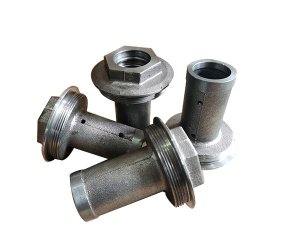What Is Iron Casting?
What Is Iron Casting?

Gray iron is the most common type of iron casting. Its properties are good, making it the preferred material for a wide variety of applications. Its properties include high hardness, tensile strength, compressive strength, fatigue strength, and resistance to corrosion. While this type of iron casting is highly versatile, its disadvantages include low tensile strength and low elongation. It is a great choice for applications that require high tensile strength.
Yide Casting produces medium and heavy castings with sectional sizes up to four inches. It is the only iron foundry to cast the full range of test bar sizes. Inoculated irons are stronger than base iron bars and have a greater scatter of tensile strength values. A six-inch-diameter section at this foundry shows tensile strength values below the SAE line. The tensile strength data on this material are based on the center portion of the 6-in.-pediatric sections.
Gray iron is highly resistant to cracks. Its mechanical properties are related to the percentage of graphite, and the carbon-equivalent value. The cooling rate and eutectic solidification interval play an important role in the tensile strength of gray iron. The section size affects the tensile strength. The ASTM Specification A 48 requires the selection of the test bar. If the gray metal has an elongation value of less than 0.5, it will be stronger. The failure section should be as large as possible.
When choosing an iron casting foundry, it’s important to choose one that processes ductile iron separately from gray iron. The former is more malleable and durable than ductile. However, some foundries process gray and ductile iron from the same charge material. For example, if a foundry was to process internal recycled scrap gray iron, the sulfur would remain in the material. The solution would be to use a reducing agent, such as CaO, to remove the sulfur.
Graphite is another element used in iron casting. Its gray color is a result of a process known as investment casting. The investment-casting process produces pieces with thin walls and is usually used for ductile iron. Centrifugal casting, on the other hand, has the advantage of reducing porosity and sturdiness of the finished part. In addition, the material is also more resistant to corrosion, which is a positive feature for the investment-grade material.
The gray iron found in commercial castings is the most affordable of the two types of iron. This type of iron has a high modulus of elasticity and is suitable for structural components that must be stiff. On the other hand, it is prone to thermal fatigue, so it is not recommended for housing and machinery bases. Its high tensile strength and elasticity to make it the best choice for these applications. It is a great choice for those who want to save money.




Leave a Reply
Want to join the discussion?Feel free to contribute!